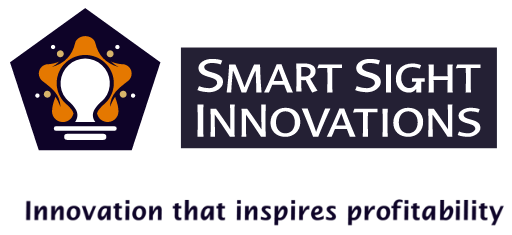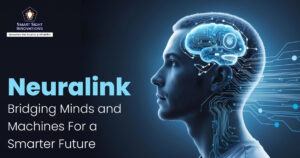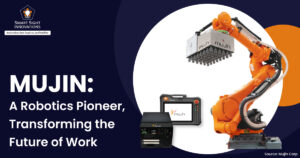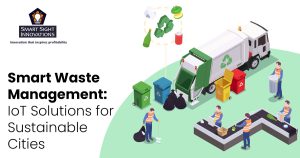
Artificial Intelligence (AI) has transitioned from being a futuristic concept in science fiction to a transformative force driving innovation across the globe. Over the past decade, AI-powered technologies have penetrated nearly every industry, revolutionizing how we work, communicate, and live. By mimicking human intelligence, AI systems can analyze data, recognize patterns, and make decisions with unprecedented accuracy and efficiency, paving the way for advancements that were once unimaginable.
Understanding the rise of AI-powered technologies is not just about embracing innovation but also about ensuring its implementation is ethical, equitable, and sustainable. The journey from science fiction to reality has only just begun, promising a future where AI plays an integral role in shaping the way we live and thrive.
China’s AI-Powered Surveillance Network

China has leveraged its advanced AI technology to build an AI-powered surveillance network capable of finding missing children in hours instead of weeks. This system exemplifies the intersection of AI, big data, and ubiquitous surveillance, showcasing its potential to address critical societal issues like missing persons. Here are the core elements that enable its extraordinary capabilities:
-
Nationwide Surveillance Camera Network
China has installed over 200 million surveillance cameras across the country as part of its “Skynet” system. These cameras monitor public spaces in both urban and rural areas, providing comprehensive coverage. Equipped with high-definition capabilities, these devices capture detailed images, making them a pivotal tool in identifying individuals.
-
AI Algorithms and Facial Recognition Technology
At the heart of this system are sophisticated AI algorithms that analyze visual data captured by the cameras. Facial recognition technology allows the system to compare real-time footage with photographs of missing children. The AI can account for changes in appearance, such as aging or minor facial alterations, and even recognize faces partially obscured by masks or hats.
-
Integration with National Databases
The surveillance network is interconnected with national databases, including police records, public transportation logs, and social media platforms. This integration facilitates rapid cross-referencing of data, enabling authorities to narrow down search efforts effectively. For instance, if a missing child is spotted boarding a train, the system can track the train’s route and identify potential destinations.
-
Real-Time Alerts
When the system detects a potential match, it immediately alerts law enforcement agencies. These alerts include the child’s last known location, movement patterns, and other crucial information, allowing authorities to respond quickly.
The AI-powered surveillance network has already demonstrated its effectiveness in real-world scenarios. One notable case involved a child who had been missing for three days. Using facial recognition, the system identified the child wandering in a park over 500 miles away from the initial disappearance site. Law enforcement was promptly notified, and the child was reunited with their family within hours.
Digital Twin of Every City

In recent years, the concept of a Digital Twin has emerged as a transformative tool for cities around the world. At its core, a Digital Twin is a virtual replica of a physical entity, system, or process that is continuously updated with real-time data. When applied to cities, this concept refers to the creation of digital models that represent every aspect of urban infrastructure, services, and human activities.
The Digital Twin of a city is a dynamic and continuously evolving digital replica of the real-world environment, offering profound implications for urban planning, management, sustainability, and the quality of life for its residents.
How Digital Twins Work in Urban Environments?

A digital twin for a city integrates vast amounts of data collected through sensors, IoT devices, satellite imagery, and other data sources that provide real-time information about the city’s physical and operational environment. This includes data on traffic flows, air quality, energy consumption, waste management, water systems, and even social dynamics. Through machine learning and data analytics, these digital models simulate real-world conditions and predict outcomes based on various scenarios.
Benefits of Digital Twins for Cities
1. Optimized Urban Planning and Infrastructure Management
Urban planning is one of the primary applications for digital twins in cities. By creating accurate and detailed simulations of urban areas, planners can make more informed decisions about zoning, transportation, and infrastructure development.
For instance, using a digital twin, planners can test the impact of building new infrastructure, such as roads, parks, or residential complexes, on traffic patterns, air quality, or public services before making real-world investments. This helps ensure that the decisions made are data-driven and aligned with the city’s long-term sustainability goals.
Digital twins also improve the management of existing infrastructure. Regular monitoring of buildings, bridges, roads, and utilities enables early detection of wear and tear, reducing the risk of costly repairs or catastrophic failures. Maintenance can be scheduled proactively based on real-time data, saving money and extending the lifespan of urban assets.
2. Sustainability and Environmental Benefits
With the increasing pressure to combat climate change and reduce carbon footprints, cities are under immense pressure to become more sustainable. Digital twins can play a significant role in this transition.
Through simulations, cities can monitor energy consumption, water usage, and waste management systems, identifying inefficiencies and optimizing resource allocation. They can also track the environmental impact of urban development, helping cities minimize deforestation, preserve green spaces, and manage biodiversity.
Moreover, digital twins can assist in disaster response planning by simulating the effects of natural disasters such as floods, earthquakes, or storms. By understanding how different factors affect city infrastructure, emergency services can prepare more effective response strategies and mitigate damage to property and human lives.
3. Enhanced Public Safety and Disaster Response
The ability to model emergency scenarios and predict potential risks is another vital benefit of digital twins. For example, a city’s digital twin can simulate the spread of a wildfire or the aftermath of a terrorist attack, allowing emergency responders to deploy resources more efficiently. Real-time data feeds from sensors in the field can be used to track the location of incidents and inform first responders, helping them to navigate complex urban environments more effectively.
Additionally, digital twins can enhance citizen safety by providing early warning systems for events like extreme weather, allowing people to prepare for potential hazards. During events like floods or fires, the digital model can help authorities identify evacuation routes and safe zones, making disaster management more efficient.
4. Improved Quality of Life for Citizens
Digital twins can significantly improve the daily lives of urban residents by creating smarter, more responsive cities. For instance, the integration of smart city technologies can enable residents to access real-time information on traffic conditions, available public transportation, and air quality.
In the future, smart homes and connected infrastructure could be seamlessly integrated with the city’s digital twin, allowing for automated responses to everyday challenges like energy consumption and waste management.
By using data-driven insights, cities can become more inclusive and adaptable to the needs of all residents, ensuring that urban spaces remain livable, resilient, and efficient. Whether it’s ensuring access to clean water, reducing noise pollution, or optimizing energy grids, digital twins empower cities to be more responsive to their citizens’ needs.
AI-Enabled Traffic Control in Shenzhen

Shenzhen, a city known for its rapid urbanization and technological advancements, has become a global leader in using AI to manage and predict traffic flow. With its growing population and expanding infrastructure, Shenzhen faces significant challenges in maintaining efficient traffic management. To address these issues, the city has embraced AI-powered systems that help predict and alleviate congestion, improve safety, and optimize overall traffic flow.
One of the core technologies used in Shenzhen’s traffic management system is AI-powered predictive analytics. By integrating real-time traffic data from sensors, cameras, and GPS-enabled vehicles, the AI system can analyze traffic patterns and predict congestion hotspots before they occur. This allows city officials to take proactive measures, such as adjusting traffic signal timings, redirecting traffic, or deploying law enforcement to prevent bottlenecks.
AI algorithms in Shenzhen’s system are capable of processing massive amounts of data in real-time, identifying patterns and trends that human planners might miss. For example, the system can predict rush hour traffic, road closures, or even the impact of special events on traffic flow. This predictive capability helps the city minimize congestion and reduce the time spent in traffic, ultimately improving the quality of life for commuters.
Shenzhen also leverages AI for smart traffic lights. The city’s traffic lights are equipped with AI technology that adjusts signal timing dynamically based on real-time traffic conditions. This eliminates the inefficiencies of fixed-timed signals and ensures that traffic flows smoothly, particularly during peak hours. AI helps optimize traffic patterns by considering factors such as the number of vehicles, the time of day, and weather conditions, ensuring that traffic is managed efficiently at all times.
In addition to improving traffic flow, AI-powered traffic management systems enhance road safety. AI systems can detect accidents, and even pedestrian movements, allowing for faster response times from emergency services. The system can also send alerts to drivers about traffic incidents, helping them avoid accidents and delays.
In conclusion, Shenzhen’s AI-driven traffic management system is transforming the way the city handles transportation. By using AI to predict and manage traffic, the city is able to optimize flow, reduce congestion, and improve safety for its residents. As Shenzhen continues to grow, AI will play an increasingly important role in shaping its future mobility solutions.
AI in Law Enforcement

AI is increasingly being integrated into law enforcement, revolutionizing the way police forces operate and respond to crime. By leveraging AI technologies, law enforcement agencies can improve efficiency, enhance security, and address modern challenges in public safety.
-
Predictive Policing
One of the most impactful applications of AI in law enforcement is predictive policing. AI systems can analyze vast amounts of historical crime data, such as the time, location, and nature of previous crimes, to predict where and when future criminal activity is likely to occur.
These predictive models allow police forces to allocate resources more effectively by focusing patrols on high-risk areas and times. This proactive approach aims to prevent crimes before they happen rather than merely responding to them after the fact.
For example, cities like Los Angeles and Chicago have implemented predictive policing tools that help officers understand crime trends and plan interventions. These tools can identify crime hotspots and patterns, improving decision-making and optimizing law enforcement operations.
-
Facial Recognition and Surveillance
Facial recognition technology has become one of the most controversial yet widely used AI tools in law enforcement. It enables police to scan public spaces and identify individuals by comparing facial features with those in databases. This technology can be used to locate missing persons, identify suspects, or track individuals in real-time.
Cities like New York and London have already deployed facial recognition in public spaces to monitor and detect criminal activities. In addition, AI-powered surveillance cameras can automatically detect suspicious behavior or unusual activity, alerting law enforcement to potential threats.
-
Automated License Plate Recognition (ALPR)
AI is also used in ALPR systems, which scan vehicles’ license plates and compare them to a database of stolen cars or vehicles involved in criminal activities. ALPR systems can capture plates in real time, enabling officers to track down suspects or stolen vehicles quickly. These systems are particularly effective in high-traffic areas, toll booths, and parking lots.
ALPR technology has been successfully implemented in countries like the United States of America, Australia, and China, significantly aiding in the identification of criminals or locating stolen property.
-
AI in Crime Investigation
AI is also enhancing crime investigations by automating and streamlining several tasks. For example, AI can help law enforcement analyze digital evidence, such as emails, text messages, and social media posts, to identify potential leads or connections between suspects. AI tools can search vast amounts of data quickly, helping investigators identify patterns and find key evidence that might otherwise take days or weeks to uncover.
Additionally, AI can assist forensic experts in analyzing crime scenes, identifying fingerprints, DNA evidence, or weapon trajectories. Machine learning algorithms can identify correlations in data sets, increasing the speed and accuracy of investigations.
-
AI for Cybersecurity and Digital Threats
As the world becomes more digitally connected, AI is playing an increasingly important role in cybersecurity. Law enforcement agencies are using AI to combat cybercrime, including hacking, identity theft, and online fraud.
AI-powered tools can detect unusual online behavior or patterns indicative of cyber threats, such as phishing attacks or data breaches. By analyzing traffic patterns and suspicious activities in real time, AI can help law enforcement respond to cybercrimes faster.
AI is also being used to analyze encrypted communications and track the activities of cybercriminals on the dark web, helping authorities dismantle criminal networks that operate online.
AI-Powered Technologies in Other Countries

- Singapore’s “Smart Nation” initiative is a comprehensive effort to transform the city-state into a leading example of how technology, particularly AI, can enhance urban living. Launched by the Singapore government, the initiative leverages AI to improve various aspects of daily life, from smart transportation systems, to Smart Health initiatives, and AI is being integrated into urban planning.
- The London Metropolitan Police has been testing predictive crime mapping as part of its efforts to enhance public safety and improve law enforcement efficiency, using AI and data analytics.
- New York City is exploring traffic optimization using AI to address its notorious congestion and improve the flow of traffic across its densely populated streets. Additionally, AI tools help New York City’s Department of Transportation (DOT) monitor and optimize public transportation networks, including buses and subways.The city is also experimenting with smart parking systems powered by AI, which can identify available parking spots and guide drivers to them.
Ethical Concerns

While the efficiency of China’s AI-powered surveillance network is undeniable, it also sparks important debates about privacy, ethics, and potential misuse. Critics argue that the pervasive nature of China’s surveillance infrastructure infringes on individual privacy. Citizens are constantly monitored, raising concerns about the extent to which personal freedom is compromised.
The massive amounts of data collected by this system pose significant security risks. Unauthorized access or data breaches could lead to severe consequences, including identity theft or misuse of sensitive information.
Misidentifications, particularly of marginalized groups, could lead to wrongful detentions or undue stress for innocent individuals. Ensuring fairness and accuracy in the system’s operations is a critical challenge.
Though these technologies demonstrate the transformative power of AI when integrated with robust infrastructure, it also serves as a cautionary tale for other countries considering similar systems. Striking a balance between technological innovation and the protection of civil liberties is paramount.
Implementing AI-Powered Technologies Responsibly and Ethically

Implementing AI technologies like predictive crime mapping, traffic optimization, and smart city systems responsibly and ethically is crucial to ensuring they benefit society while protecting individual rights and maintaining fairness. Here are key guidelines for responsible and ethical implementation:
1. Transparency and Accountability
AI systems should be transparent in their design, deployment, and decision-making processes. Governments and organizations must provide clear explanations about how these systems work, what data they use, and how decisions are made. This transparency fosters trust among the public and ensures accountability when things go wrong.
For example, if an AI system predicts crime patterns or optimizes traffic flow inaccurately, there should be a clear process for addressing errors and accountability for any harm caused.
2. Data Privacy and Security
AI systems often rely on large amounts of personal data. It’s essential to ensure that data collection respects privacy and is securely stored. Implementing strict data protection regulations, like anonymizing sensitive data, obtaining consent, and limiting data access, ensures individuals’ privacy is protected. Additionally, organizations must establish robust security measures to prevent unauthorized access to the data and AI systems.
3. Bias Mitigation
AI algorithms can inadvertently perpetuate or amplify biases if they are trained on biased data. For example, predictive crime mapping may unfairly target certain communities if the data used reflects historical biases in policing.
To mitigate bias, it’s important to carefully select and audit training data, use diverse data sets, and continually evaluate the algorithm’s performance across different demographics. Regular audits by third-party experts can help identify and address biases.
4. Public Participation and Stakeholder Engagement
Involving the public and relevant stakeholders in the design and deployment of AI systems is crucial. People should have opportunities to voice concerns, ask questions, and offer input on how AI technologies affect their communities. Public consultation ensures that the technology meets the needs of diverse groups and that its implementation aligns with societal values.
5. Ethical AI Governance
Establishing clear ethical guidelines for AI development and use is essential. This includes defining ethical boundaries and ensuring that AI systems do not infringe on human rights, such as freedom of expression or the right to fair treatment.
Governments and organizations should collaborate with ethicists, legal experts, and technologists to create frameworks that govern AI applications responsibly. This governance should prioritize long-term societal benefits over short-term gains.
6. Continuous Monitoring and Evaluation
Once AI systems are deployed, continuous monitoring is crucial to ensure they function as intended and remain effective. This includes evaluating their impact on traffic patterns, crime rates, or public services and assessing whether they disproportionately affect certain groups.
Regular evaluations help identify unintended consequences and provide the opportunity to adjust or discontinue certain AI applications if they cause harm.
By following these principles, cities and organizations can implement AI technologies responsibly and ethically, promoting trust, fairness, and the well-being of all citizens.















